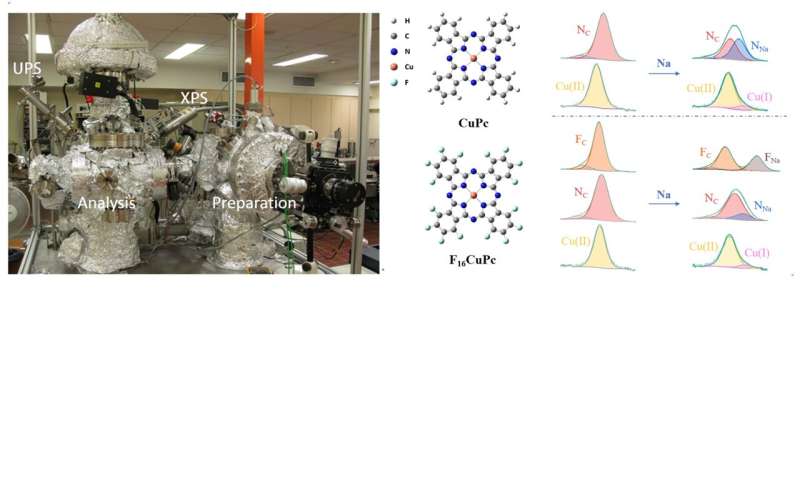Protection of sodium metal anodes meets in situ photoelectron spectroscopy

Sodium metal batteries (SMBs) have attracted extensive attention because of their high theoretical capacity (1166 mAh/g), low redox potential (−2.71 V vs. SHE), high natural material abundance, and low cost. However, the growth of dendrites results in poor battery performance and severe safety problems, inhibiting the commercial application of SMBs.
In order to stabilize sodium metal anodes, various methods have been developed to optimize the solid electrolyte interphase (SEI) layer and adjust the electroplating/stripping behavior of sodium. Among them, developing anode host materials and adding electrolyte additives to build a protective layer are promising and convenient ways. In order to achieve the rational design of advanced anode hosts and electrolyte additives, the understanding of the interaction process between sodium metal and those organic materials is of great significance.
Researchers led by Prof. Wei Chen at National University of Singapore, Singapore, are interested in the interface protection of sodium metal anodes, which is indispensable for the development of sodium metal batteries. They creatively linked in situ interface research methods with the protection of sodium metal anodes.
Since the battery system is complicated with various electrolyte compositions and side reactions, in order to simplify the research system and give direct evidence about the interaction process between sodium metal anodes and the electrolyte additives (or hosts), they used organic molecules as model systems. Through their custom-designed in situ UHV-XPS/UPS systems, they unraveled the Na interaction process at Na/CuPc and Na/F16CuPc interfaces, especially the effect of fluorination on sodiophilic sites, which provide insights into the radical design of fluorine-containing electrolyte additives and hosts for the protection of sodium metal anodes.
The work entitled was published on Frontiers of Optoelectronics.
Yuan Liu et al, Probing fluorination promoted sodiophilic sites with model systems of F16CuPc and CuPc, Frontiers of Optoelectronics (2022). DOI: 10.1007/s12200-022-00026-3
Provided by
Higher Education Press
Citation:
Protection of sodium metal anodes meets in situ photoelectron spectroscopy (2022, May 23)
retrieved 23 May 2022
from https://phys.org/news/2022-05-sodium-metal-anodes-situ-photoelectron.html
This document is subject to copyright. Apart from any fair dealing for the purpose of private study or research, no
part may be reproduced without the written permission. The content is provided for information purposes only.
For all the latest Science News Click Here
For the latest news and updates, follow us on Google News.

